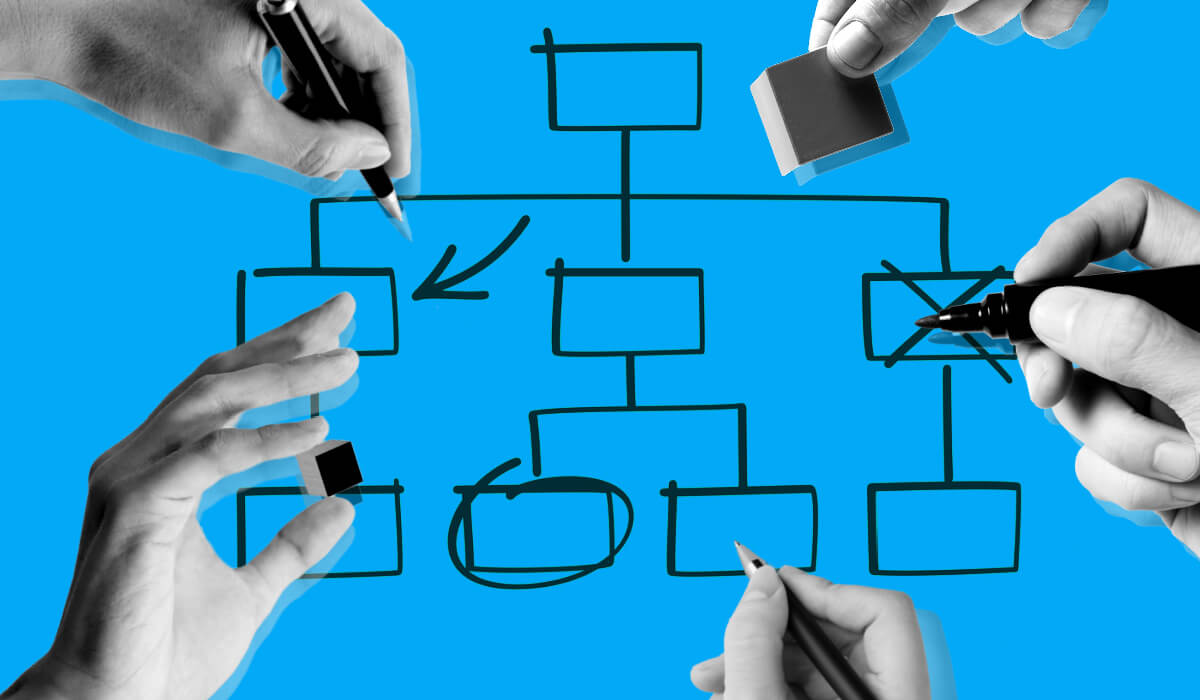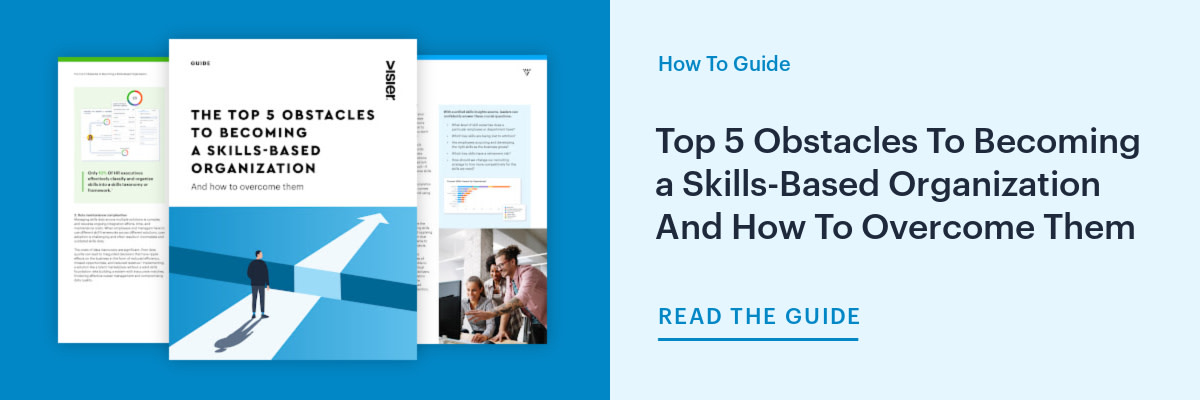Internal Mobility: A Strategic Guide for HR Leaders
Supporting internal mobility boosts employee retention, decreases hiring costs, and helps to build a more resilient workforce. Learn why, and how to get started here.

Internal mobility is the movement of employees within an organization. Until a few years ago, stories of people who moved to different positions within the same company were not something you’d hear every day.
Recent events, such as the Great Resignation, forced companies to change their approach to hiring. Things like upskilling, reskilling, and succession planning became part of the business strategy.
Internal mobility comes with a lot of benefits for both employees and companies. It offers people a chance to grow, keeps them curious and engaged, reduces voluntary turnover rates, and improves employee satisfaction. Here’s everything you need to know to create an effective internal hiring program.
What is internal mobility?
Internal mobility, also known as career mobility or talent mobility, is the lateral and vertical movement of employees within a company. These movements can be promotions, demotions, new positions, job swaps, and more, and are often part of a new career or personal development opportunity for the employee.
A good internal mobility program encourages employees to constantly improve and learn. It also offers a feeling of security. Employees will know that if one day their position is no longer required, they could move to a different one. Because of that, internal mobility has been shown to increase employee engagement, loyalty, and retention.
It also takes a lot of pressure off the talent acquisition process. You will still occasionally need to hire externally. But, knowing you can fill the most important positions in the company with people who are already working with you is an immense benefit.
These employees already know the company culture and adapting to a new job will be much easier for them.
What are the different types of internal mobility?
When hearing the term internal mobility, many think of promotions, but there’s a lot more to it. Here are some of the most common types of internal mobility at an organization.
1. Role-to-role mobility
Also known as lateral mobility, role-to-role mobility means transferring to a different position with little to no change in level or salary. Reskilling is usually useful at this stage. You can use this type of career mobility to help those whose positions are becoming obsolete, for instance. It gives people more job security, helps them learn new skills, and makes the talent acquisition process easier because you won’t need to hire externally as much.

2. Upward mobility
Commonly known as a promotion, upward or vertical mobility rewards high performers, offers a hand in succession planning, and a sense of security when people in key leadership positions are close to retirement.
Promotions are a positive signal to employees that their efforts are seen and rewarded. The results? Improved productivity and performance, better engagement, and job satisfaction.
3. Transfers
Also known as geographical mobility, transfers usually imply staying in the same or a very similar position, but changing locations.
A good example is a computer engineer working for a multinational company. The engineer could one day need to move to a different location. In an effort to help him and not lose him as an employee, the company can offer him the same job in the new location.
Alternatively, the company could have too many engineers working in one location, but not enough at a different one. A simple way to solve the problem is to discuss it with employees and see if one of them would move to the new location.
Transfers can be permanent or temporary for the duration of a project.
4. Project-based mobility
Project-based mobility is similar to transfers, but it doesn’t always involve a change in location. Team members can join colleagues from a different department for the duration of a project.
It is a great way to improve engagement and help employees make use of skills they might not use in their normal position.
Why is internal mobility important?
Internal mobility is a win-win for both employees and the company. It improves your talent acquisition pipeline, fosters an environment that prioritizes learning and development, and lowers voluntary attrition.
Many companies still feel the effects of the Great Resignation. Losing employees with little notice is not a position anyone wants to be in. But if you create a strong internal mobility program, you can create a resilient workforce. Even when events catch you off guard, you can respond quickly.
Benefits of internal mobility
Employees want to know there are real chances for them to be promoted. They want to know their efforts are not in vain, but instead, they are observed and rewarded. Internal mobility helps with all that. Here are its most important benefits.
1. Employee retention
Having an internal mobility program is a way to indirectly signal to employees that they can promote or change to a different position.
They don’t have to see themselves stuck in the same job. They will know that if they want to use other skills, there are opportunities inside the company. This increases employee retention and helps your company stay productive and competitive.
2. Reduced hiring costs
Hiring externally can cost a lot. You need to invest in attracting the right candidates, spend time with interviews and tests, and finally go through the onboarding process. Plus, sometimes, no matter how hard you try, candidates may reject your offer or you might realize, during or after the onboarding phase, it is not the match you thought it would be.
Internal mobility can help reduce those costs. You’ll be able to fill many positions with people who are already in the company, who perform well, and who understand the company culture. You will still need to consider a short period of adjustment, but the time to productivity will be much shorter.

3. Improved engagement
Engaged employees have lower absenteeism rates and perform better. One way to increase engagement is to offer people the opportunity to continuously learn new things and use all their skills, both of which are essential to internal mobility.
4. Resilient workforce
When you prioritize learning and development and have employees who are ready to take on other roles easily, you create a resilient workforce that can stay productive and competitive at all times.
No matter how well you try to plan, sometimes there will be situations that will catch you off guard. A resilient workforce is one of the best weapons you can have. It will ensure you can go through turbulence with minimal losses.
4 steps to an internal mobility program
An internal mobility program contains specific processes that will ensure talent moves around in the company effectively. Here are a few steps to get you started.
1. Identify talent and skills needs
Before you can start thinking about whom to train and for what positions, you need to get clear on what skills you will need in the future. Start by looking at the key positions in your organization at the moment, but don’t overlook future needs either.
Look at your long-term plans and goals. If you foresee an expansion in the next few years, what new skills will you be needing? Being clear on your needs will help you focus your program in the right direction.

2. Audit the skills you currently have
You know what each employee was hired to do in their initial role, but that’s not always the full extent of their skills. At this stage, you’ll probably want to involve everyone, from the HR department to managers and the employees themselves.
By the end, you should have a good idea of what everyone can do beyond what is required of them for their current position.
3. Develop a learning and development plan
Now that you know the skills you have and the skills you need, it’s time to create an L&D program that will support your employees in learning and practicing various skills.
Don’t be afraid to use cross-training strategies. These include:
Job shadowing, where employees observe their colleagues and learn from them
Mentoring, where employees perform tasks other than those for their current position under the guidance of a mentor
Cross-functional projects during which employees collaborate with colleagues from different departments, gaining insights into how they are organized
4. Track results and adapt your strategy
You can’t have a good internal mobility program if you don’t track and measure success. Decide what metrics you will track and what results you’re expecting. Try to look at both short-term and long-term results to spot any issues before they derail your entire program or negatively impact your company.
Track metrics related to engagement, absenteeism, attrition, or any other numbers that are relevant to your program. You can also talk to your employees. See how they feel about the idea of moving to a different department, location, position, and more. Use all this data to improve your program and adjust it as needed.
Key takeaways
Internal mobility is essential if you want to have a resilient workforce that can adapt to the unpredictable and perform well. It boosts engagement, retention, and employee satisfaction, helping people cultivate skills beyond what is strictly required for their current position.
Internal mobility is more than just promotions. It includes geographical mobility, project-based transfers, and more.
Creating an internal mobility program starts right from the hiring stage. Assess all the skills each new employee can bring to the company, while also keeping in mind your current and future needs.
Cultivate an environment that prioritizes learning and development and be transparent about expectations. Finally, don’t forget to track your progress and talk to employees to get their thoughts on the program, and the idea of moving to different positions one day.
On the Outsmart blog, we write about workforce-related topics like what makes a good manager, how to reduce employee turnover, and reskilling employees. We also report on trending topics like ESG and EU CSRD requirements and preparing for a recession, and advise on HR best practices like how to create a strategic compensation strategy, metrics every CHRO should track, and connecting people data to business data. But if you really want to know the bread and butter of Visier, read our post about the benefits of people analytics.



